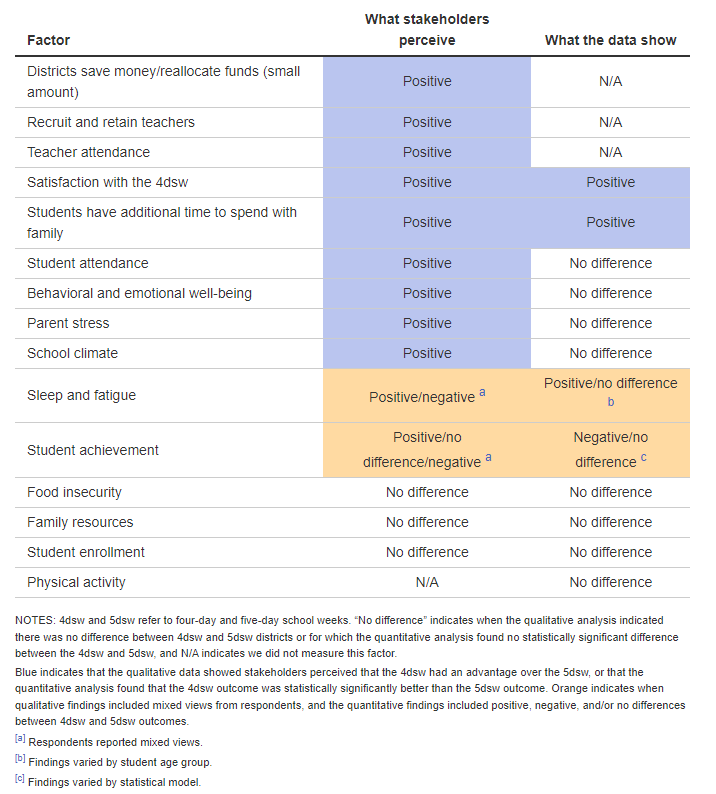The four-day school week (4DSW) is rapidly gaining traction across the United States as districts scramble to recruit and retain teachers. Once a predominant feature of rural districts, the most recent figures shows the 4DSW model is in 850 school districts across 24 states in the United States. While schools used to cite financial reasons as the major reason for making the change to the 4DSW calendar, districts like the St. Joseph School District in Missouri and districts in Arkansas are largely contributing the main reason to be teacher recruitment and retainment. But even with 4DSW districts garnering more attention, this still begs the question: Where is the future of 4DSWs headed?
First, let’s look at the pros and cons of the 4DSW.
The benefits of 4-day school weeks:
- Improved Work-Life Balance: A shorter week means more time for teachers to prepare lessons and collaborate, and for students to engage in extracurricular activities or family time. This also translates into better attendance since each day carries more weight.
- Teacher Recruitment and Retention: Districts on a 4DSW tend to attract more and better-qualified teacher applicants, as seen in Colorado’s District 27J.
The downsides of 4-day school weeks:
- Equity Concerns: For lower-income families, finding childcare for the extra day can be challenging and expensive. Additionally, many students rely on school meals, and an extra day off means an additional day without those resources.
- Impact on Younger Students: Extended school days can be strenuous for younger learners, potentially impacting their learning and retention abilities.
- Extracurricular Challenges: A 4DSW can limit opportunities for after-school activities, especially when transportation is an issue.
- Unstructured Time: There’s also the concern about unsupervised time for students, which, according to a study in Colorado, correlated with an increase in juvenile property crimes.
What 2023 told us about 4-day school weeks
As more schools have adopted the 4DSW calendar, research by the RAND Corporation provides a more comprehensive look into the calendar’s effectiveness. A large survey describes communities’ preferences as:
Factors playing a role in policy decisions regarding 4-day school weeks

Source: RAND Corporation
Even though many benefits districts and communities think they will enjoy in the 4DSW adoption don’t show up in study findings, as a RAND researcher describes, communities need to decide on the trade-offs they are comfortable with. While this research group gathers several studies that chart the benefits of teacher recruitment and retention and minor cost savings, they also provide many studies that chart delays in student achievement. Even still, with these studies charting lower achievement and measures that regulate or discourage the 4DSW, districts who claim to thrive on the 4DSW still praise the benefits of quality teacher retention.
“To retain teachers, the four-day week has been a game changer. The most important thing in a classroom is the teacher, and we want the best teachers in front of our children.” —Gregg Klinginsmith, Superintendent, Warren County, Missouri
“All of this is for naught if our students don’t achieve. We believed (in the 4DSW adoption), and we still believe that having the strongest teachers in the classroom makes that happen. That was the whole goal of this, to recruit them.” —Janie Sims, Superintendent, Athens, Texas
The bottom line? More time is needed to study 4-day school weeks.
The true effectiveness of the 4DSW model remains a subject that requires further exploration. With additional years of data, we face a crucial question: Does the influx of top-tier teachers into 4DSW districts correlate with stable or improved student achievement and growth? If not, this calls for a reassessment of the 4DSW model’s efficacy. Currently, researchers find themselves at a crossroads. The evidence varies, with some studies showing minor, negligible, or even negative impacts on student achievement. However, it’s important to acknowledge that the value of a 4DSW isn’t solely measurable through standardized assessments. Factors such as student well-being and overall school environment also play a significant role.
The 4DSW model aims to not only attract exemplary teachers but also to create an environment conducive to student success. As we move forward, it’s essential to continuously monitor and evaluate its impact on student learning and growth. The effectiveness of a 4DSW in enhancing the educational experience for both teachers and students will be more clearly understood in the forthcoming years.
For more articles like this, be sure to subscribe to our newsletters.


